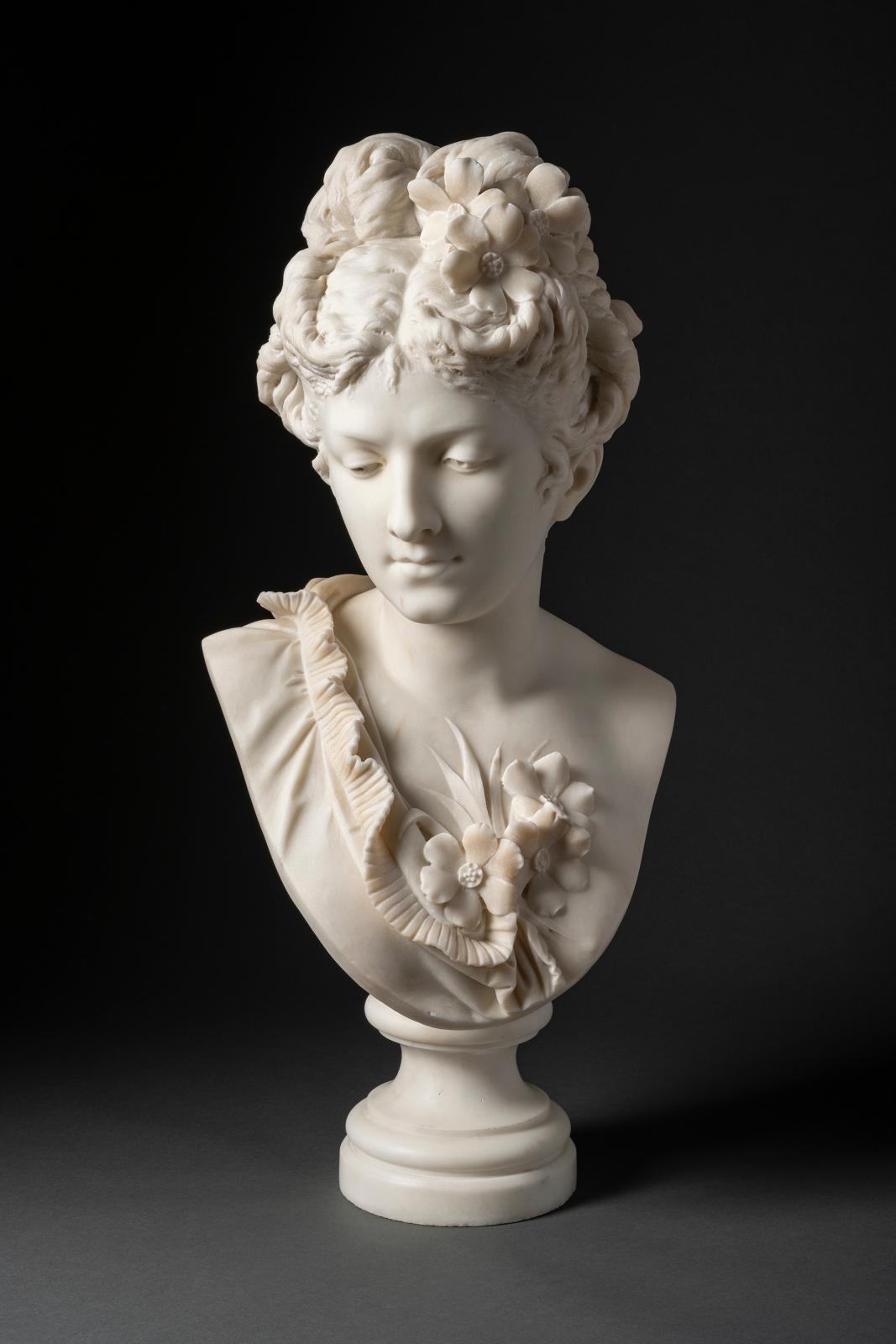




artist
Albert-Ernest Carrier-Belleuse was both a French designer and one of the most prolific, versatile and significant sculptors of the 19th century. He was apprenticed at age 13 to a goldsmith and studied at both the Ecole des Beaux-Arts in 1840 under Pierre-Jean David d’Angers and at the Petit Ecole where he concentrated on the decorative arts. He worked in London from 1850 to 1855, designing ceramics and metalwork models. When he returned to Paris, he regularly exhibited large scale sculptures at the Salon where he consistently received medals and important commissions. His first important success was in 1863 when the Emperor Napoleon III bought the life-size marble Bacchante with a Herm of Dionysus and then hired him to work on the rebuilding of Paris. During his lifetime Carrier-Belleuse produced portrait busts, public monuments, religious statuary and idealized works. He took full advantage of the commercial opportunities afforded him by the mass production of small-scale sculpture and decorative wares. His work reflected an extensive range of different styles. His male portraits were strikingly realistic, while his female nude sculptures were sensuous and baroque in their portrayal of historical and mythological themes that are typical of the opulent Second Empire period. He signed his works A. Carrier until c.1868 when he adopted the name Carrier-Belleuse.
Carrier-Belleuse maintained one of the largest ateliers in France in order to keep up with all his commissions and activities. Some of the leading sculptors of the next generation, including Auguste Rodin, Jules Dalou and Alexandre Falguière, learned from the master to appreciate the value of the applied arts as well as the benefits to be derived from working in series, editions and variations on a sculptural theme as in his female nudes.




